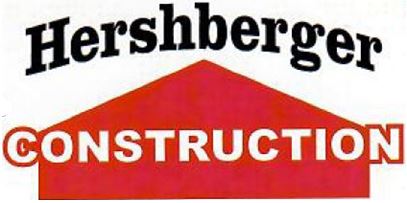Pole Barns: Versatile Solutions for Storage, Agriculture, Residential Needs, and Beyond
Table of Contents:
Sometimes, we all need a little more room.
You may need protection for your tractor, room for your alpacas, or storage for your supplies.
Traditional building methods can be time-consuming and expensive. The endless options may feel overwhelming. This leaves you searching for a better solution.
Thankfully, one option stands out for its versatility, affordability, and simplicity: the pole barn.
At Hershberger Construction, we know it’s important to find the right building that fits your needs. You want to be confident your construction investments are wise and worthwhile, giving you the features you need without breaking the bank.
With over 25 years of experience, we deliver high-quality solutions tailored to your needs.
In this blog, we’ll talk about pole barns, exploring what they are, their history, advantages, applications, and the materials used in their construction.
What Is a Pole Barn?
First things first: What exactly is a pole barn?
A pole barn is like a pair of blue jeans: built to last, provides good value, and can be dressed up or down as desired.
A pole barn is a simple yet versatile structure.
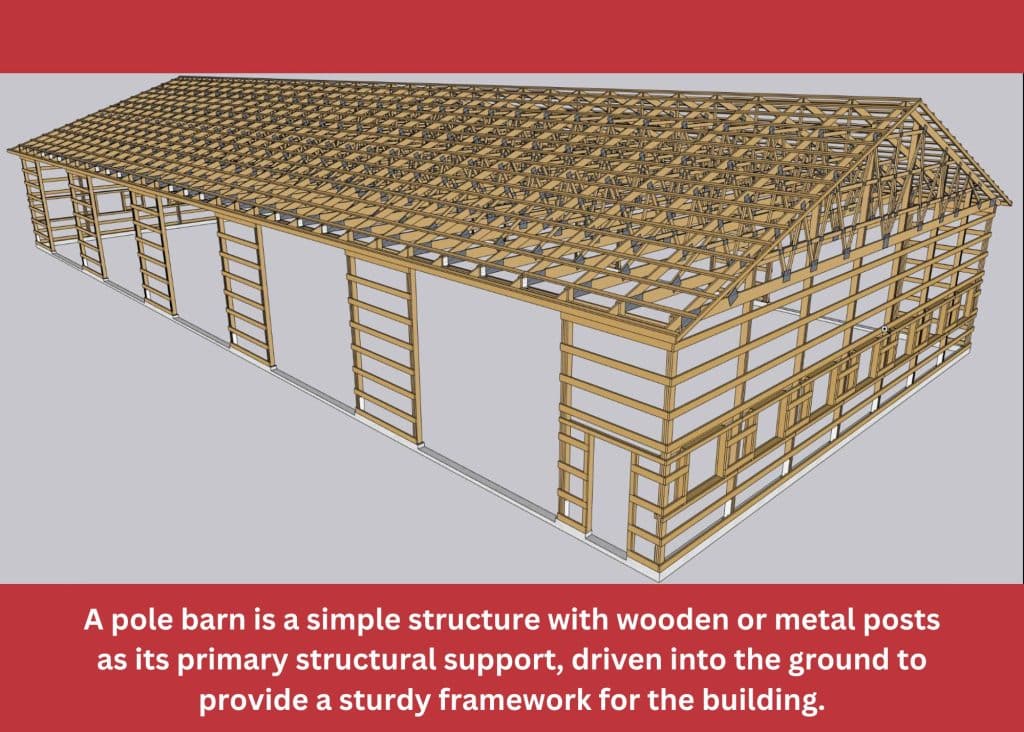
It has large wooden or metal posts as the primary structural support. These poles are driven into the ground, providing a sturdy framework for the building. This requires minimal foundation work, unlike traditional buildings. Pole barns are simple but highly robust, making them a popular choice for a wide variety of projects.
Pole barns are built to provide lots of open space and flexibility since they don’t need internal load-bearing walls. This type of construction is quick and affordable but also incredibly versatile. This makes pole barns adaptable for multiple purposes, from storage to living spaces.
Brief History of Pole Barns
Pole barns have a history that spans decades. They first appeared in the early 20th century as an economical way to build large storage buildings. They were intended to provide efficient and affordable building options for farming communities. Farmers wanted to protect their valuable livestock and equipment without spending as much as a more traditional barn. Thus, the pole barn was born.
During the Great Depression, when resources were scarce, this method gained popularity. It was affordable and practical, providing much-needed shelter for agricultural products and machinery.
Over the years, materials and construction techniques have evolved. This allowed pole barns to evolve from primarily agricultural to modern, multi-purpose facilities. Today, they are used in residential, commercial, and even recreational applications.
Advantages of Pole Barns
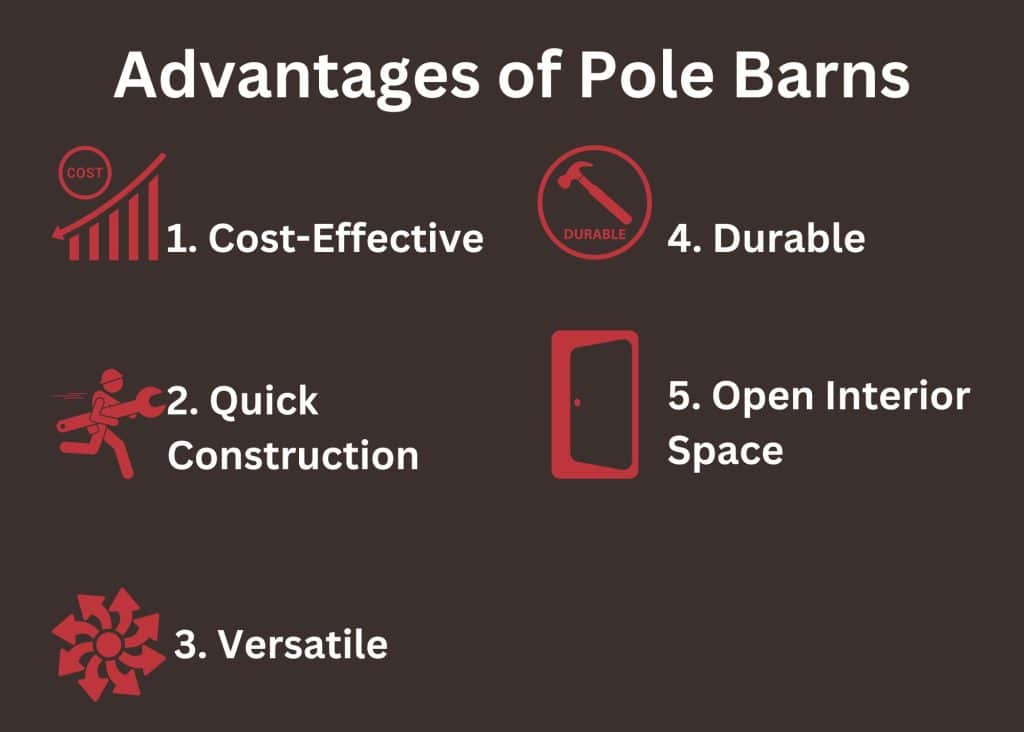
There are countless advantages to opting for a pole barn over traditional construction methods:
- Cost-Effective: Pole barns are budget-friendly because they need fewer materials and less labor. This significantly reduces overall costs compared to conventional construction methods.
- Quick Construction: Pole barns can be built much faster than traditional structures because they have fewer parts and simpler assembly. This saves time and gets you up and running quickly.
- Versatility: Pole barns are incredibly adaptable. This flexibility allows customization for almost any need. Whether you need a storage shed, a horse stable, or even a residential home, a pole barn can be modified to meet your specific needs.
- Durability: Pole barns might have a simple design, but their sturdy construction makes them tough enough to handle harsh weather, such as heavy snow, strong winds, and rain. This makes them a reliable and long-lasting solution for various applications.
- Open Interior Space: The design of pole barns eliminates the need for interior load-bearing walls. This provides maximum usable space. This open layout is perfect for significant storage needs or flexible interior layouts. This gives you the freedom to design the interior to suit your purpose.
Applications of Pole Barns
Given their versatility and range of benefits, it’s no wonder pole barns have a wide range of applications across different sectors:
Agricultural
Pole barns started in the agricultural sector and for a good reason. Many farmers use pole barns to store tractors, harvesters, and other machinery.
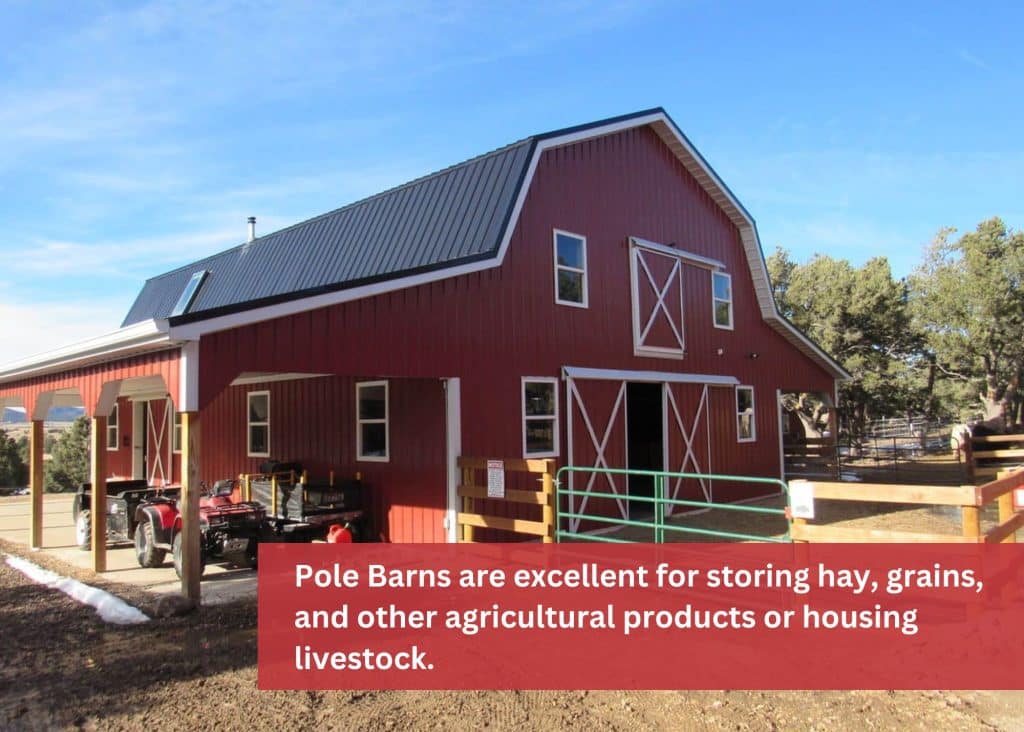
They also are excellent for storing hay, grains, and other agricultural products or housing livestock. They are a popular choice for farmers who need reliable and spacious buildings due to their versatility and ease of construction.
Residential
The application of pole barns has expanded significantly into the residential arena. Modern pole barns can be designed as comfortable living spaces, featuring open floor plans allowing creative interior design. They serve as ideal solutions for guest houses, workshops, or as a garage for extra car storage.
Commercial
Pole barns are used as cost-effective warehouses, retail spaces, and office buildings in commercial settings. Their low cost and quick setup make them attractive for businesses looking to expand their operational space without serious capital expense.
Recreational
Pole barns are also ideal for recreational uses, such as community centers, sports facilities, and even personal hobby spaces. They are utilized as meeting halls or recreational centers. Pole barns make simple indoor courts or gyms. Their versatility makes them great for weddings, reunions, or other indoor activities.
Materials Used in Pole Barns
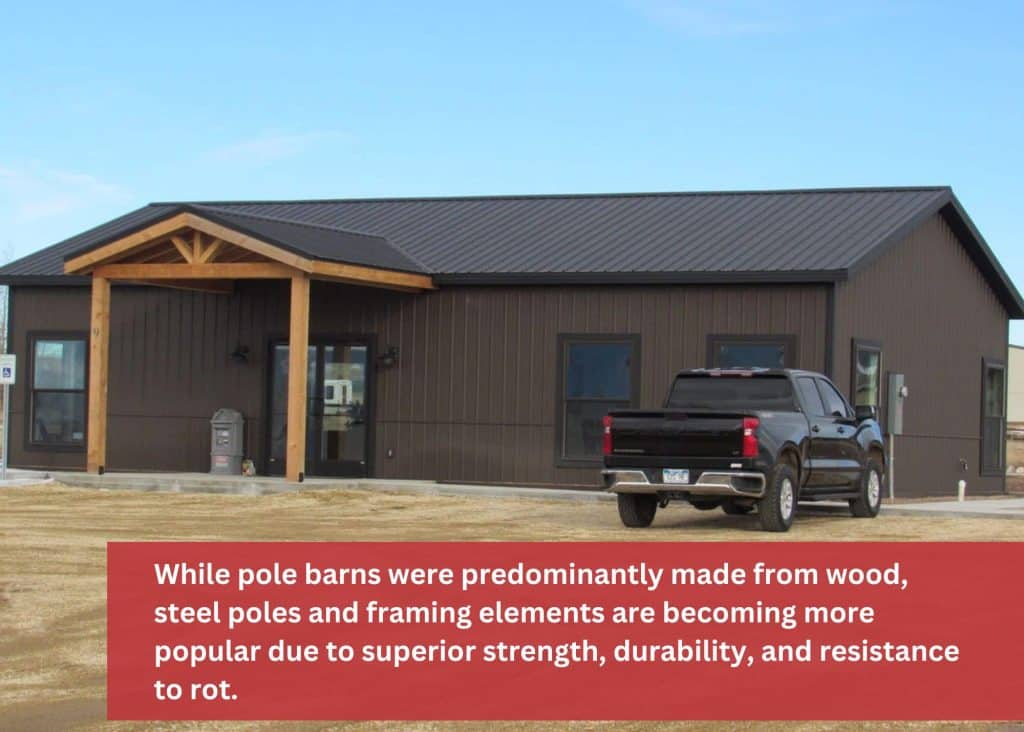
The materials used in constructing pole barns have diversified over time, enhancing their durability and functional appeal. Here’s a quick rundown:
- Wood: Traditional pole barns were predominantly made from wood. It remains popular due to its natural aesthetics, cost-effectiveness, and availability. Wood provides a rustic charm that blends seamlessly into rural and agricultural landscapes. This adaptability makes it an appealing option for those looking to maintain a traditional look while being environmentally friendly.
- Steel: Steel poles and framing elements offer superior strength, durability, and longevity. This makes them an excellent choice for commercial and industrial applications. Steel’s robustness allows for larger, more open spaces without needing interior support posts. This makes the space more usable. Steel also requires lower maintenance than wood because it is less likely to rot, attract pests, or warp over time.
- Prefabricated Materials: Modern advancements have introduced pre-engineered kits, combining wood and metal components. This offers a blend of aesthetics, easy assembly, and enhanced durability.
- Insulation and Siding: Various materials are available for insulation and siding. This includes traditional wood siding, metal, vinyl, and modern composite materials. These options allow for customization based on functional needs, energy efficiency, and aesthetic preferences. This ensures the structure meets practical and visual requirements.
- Other Options: Personalization options include adding HVAC, electrical systems, and aesthetic touches. You can also customize flooring, wall finishes, and fixtures. This adaptability allows you to tailor the space to specific residential or commercial needs.
-
- Popular flooring options: dirt, concrete, gravel, wood
- Popular wall finishes: plywood, drywall, shiplap, metal panels, barn wood
- Popular fixtures: recessed lights, track lights, cabinets, shelving
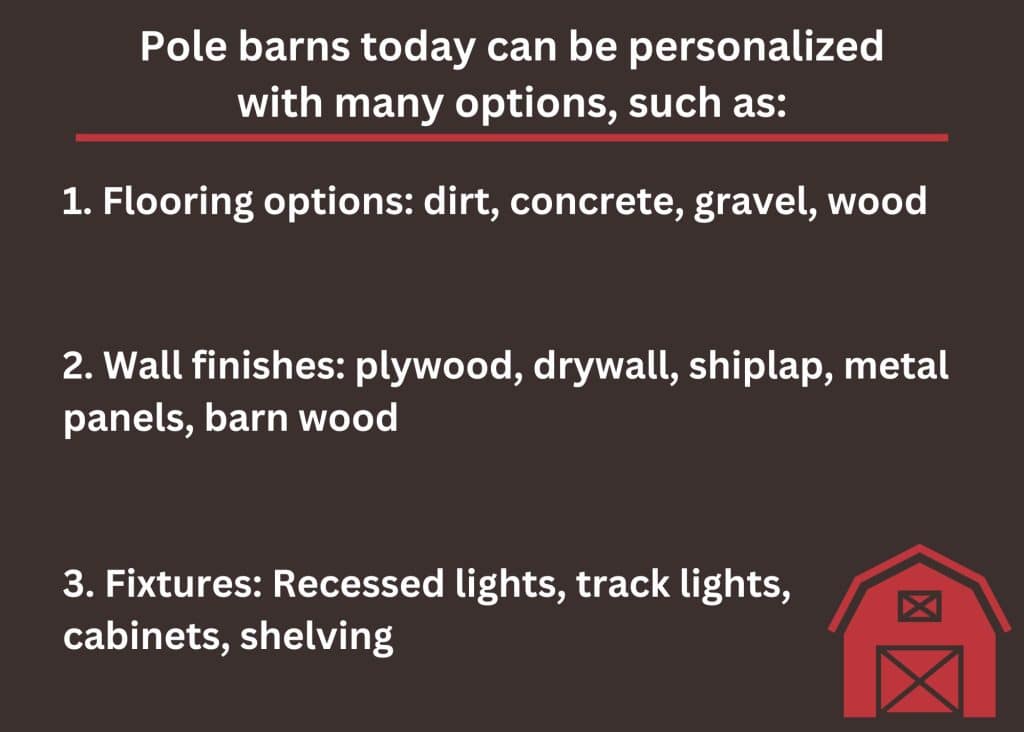
Conclusion
Pole barns are the versatile, cost-effective, and durable structures. From their origin as important tools in farming to their present-day uses in homes, businesses, and recreational areas, these structures have consistently proven their worth over time.
Whether you’re a farmer needing extra storage, a homeowner dreaming of a unique living space, or a business looking to expand, a pole barn could be the ideal solution.
By opting for a pole barn, you’re choosing a method that combines simplicity with strength, offering flexibility and durability tailored to your needs.
Your journey to the perfect pole barn begins with Hershberger Construction. Discover the ease and efficiency of post-frame construction and unlock the potential of your next project.
Ready to explore the endless possibilities a pole barn can offer? Contact us today to bring your vision to life with a customized pole barn solution.
